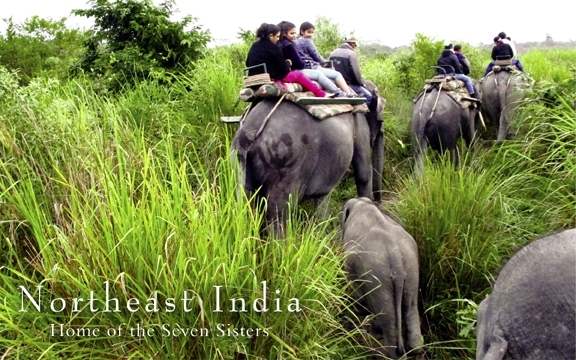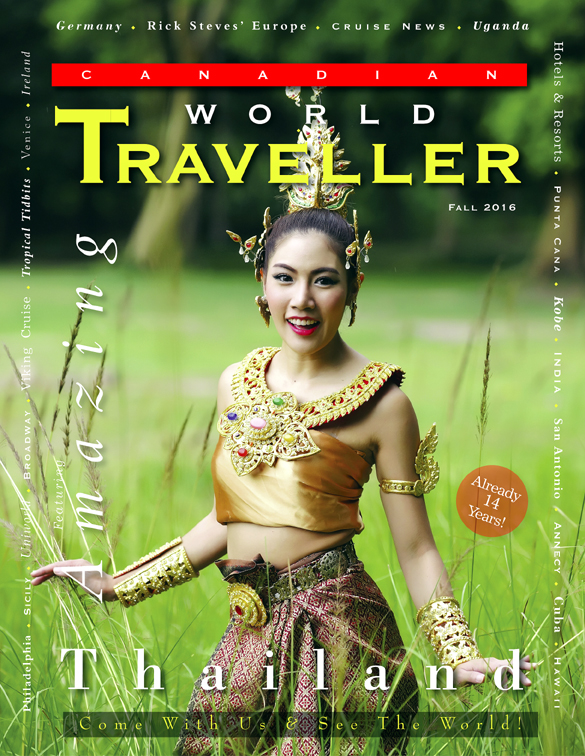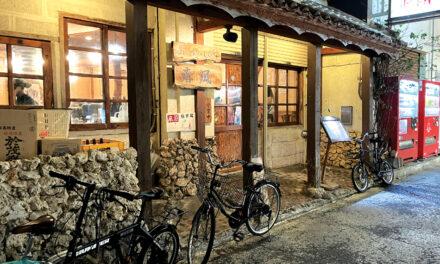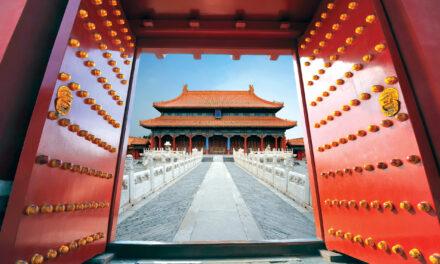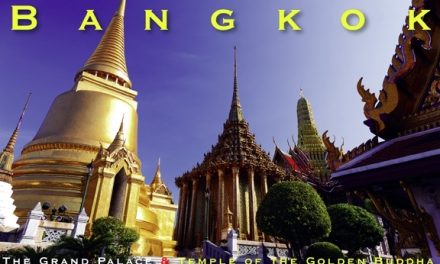India
Northeast India – Home of the Seven Sisters
Article & Photography by Michael Morcos

It keeps astounding me how often I notice the little distinctions in the countries I visit. Travelling the rural roads of India is a journey in itself. Villages popping up when least expected would force us to slow down as the locals would criss-cross the street in calm disorder, oblivious to traffic even though the 2 lane highway we were travelling on is the lifeblood of most of these villages!
As we left Kohima, our journey through Nagaland was a mix of awe and nerves. Heading towards the Kaziranga National Park, we passed through incredible mountain scenery and twisting, winding roads that quite often skirted the edge of cliffs! We stopped several times to chat with locals, take pictures and to just soak up the scenery.
Entering the valleys along the way, we noticed that most flat areas were ripe with farm land on all sides. As we were in India at rice harvest time, and it was a perfect time to get great pictures, enjoy a freshly cooked bowl of scented rice and feel the essence of rural Indian life.
Kaziranga National Park
With full stomachs and light hearts, we proceeded to our destination – the Kaziranga National Park. I love safaris, and India offers many locals to view the country’s spectacular and unique flora and fauna.
Well maintained and organized, the roads are open from November to mid-May, and visitors who want to can drive through the park in their own vehicles or go on guided tours. A special treat is that travel within the park can be done by riding elephants!
Regardless of mode, the tours inevitably offer a glimpse into the wild side of India. There are three tourist routes under the jurisdiction of three Ranges — Kohora, Bagori and Agaratoli – each offering a magnificent cross-section of the native vegetation and the many favourite hunting and foraging spots of the animals who call the park home.
As no visitor is allowed to enter the park without an accompanying representative, our group was entertained and informed by a great guide who woke us up the morning at 5am for a wonderful elephant trek. It was still dark as we left, but the sun quickly rose on the horizon. This was my second elephant ride in the wild and it was a real treat. Along the route we got to see some of the big mammals starting their day, including wild elephants, buffalo and one horned Rhinos…but my dream to see an ever-elusive tiger was not meant to be. Even during the second outing, this time in Jeeps, the tigers were not interested in human encounters. The park is also a wonderful location for bird watching, as it is home to vast array of exotic birds, including storks, multi-hued parrots and many others.
British influence, part 1
They may not be India’s rulers anymore, but the British left many traditions and features that India has adopted. One such item is Tea, and India has become masters of the art!
A visit to a tea plantation started by the British more than a century ago was a lesson in history and agriculture, as this region is very well known for its tea production and produces some of the world’s finest leaves. We were also shown the vital peppercorn plant, growing in vines on the plantation trees, something that I had never known before!
The visit also afforded us the opportunity to stock up on our gifts for back home and we bought loads of fresh and flavourful tea. Sadly we were denied the local pepper, as they were sold out of last year’s harvest – very disappointing!
Further in the day we were blessed with a visit to a small farming village that has been living the same way since antiquity. The farm-folk lived in unison with the land and were very welcoming to strangers. Gentle and open people, life moves very slowly here, and really makes you wonder about the rat race.
Guwahati, state of Assam
I will always envision Guwahati as a city of temples, as we visited 3 beautiful Hindu temples while there and could have easily visited many more.
Basistha Temple
The first one we visited, Basistha Temple, is nestled by a river and is well known, and is considered as one of the most powerful temples for most Hindus. Considered blessed by Lord Rama himself, the Basistha Temple’s ashram is like a gem in the picturesque hills. Within the temple grounds is the Garbhanga forest and butterfly reserve with an exotic blend rich flora and fauna and a very rare butterfly reserve. There is also a lovely sacred cave and waterfall where it is said that rishi Basistha used to meditate by this splendidly serene area.
The temple’s popularity was evident, as there were two different marriages on the day we were visiting, and we were invited to celebrate their special day. The weddings are wonderfully colourful, and although the brides looked a little tense, they did smile once it was over!
Kamakhya Temple
There are many ways to worship in Hinduism, 100s of gods and goddesses and most of them might be a little obscure, but one well known is Tantric worship. Although the Kamakhya Temple is a notable pilgrimage destination for all Hindus, it is especially important for for Tantric worshipers as it is dedicated to the mother goddess Kamakhya. As it is considered the centre for Tantra worship, it attracts many devotees for several annual festivals, including the Ambubachi Mela (celebration of the yearly menstruation of goddess Kamakhya) and the Durga Puja (a five-day festival that attracts several thousand visitors).
Our visit here was a real treat, as it is one of the oldest of the 51 Shakti Pithas (place of worship consecrated to the goddess Shakti) but be warned, you must take of your shoes. I left my socks on and, needless to say, they were destroyed at the end of the tour.
Umananda temple
Almost the complete opposite is the Umananda temple. Dedicated to Shiva, it is located on the “smallest inhabited riverine island” in the world – Peacock Island. Boats are available from the mainland of Brahmaputra to take the visitors to the island. A trek up Bhasmacala mountain and there you are. Assamese craftsmen have created amazing rock-cut figures, sculptures showing how the worshippers here followed all the principal Hindu gods.
Shillong, state of Meghalaya
Throughout the trip we were treated to wonderful side trips that would pop up along the roads we were travelling. One such treat was on the way to Shillong, when we stopped to visit ‘Elephant falls’, a beautiful natural wonder, and had freshly brewed tea afterwards.
Before entering the hill top city, we went to a look out, where a magnificent view was had. We even saw some high school girls posing there for what looked like graduation pictures – an idyllic photo-op!
British Influence, part 2
We started with a souvenir hunt among a lively pedestrian street in Shillong, it was great for people watching and picking up anything you can think of. I bought very beautiful hand-made jewellery for my family and the price was unbelievably cheap.
This region is very Christian, which was not something I expected in India. The western influence is quite pronounced, and we even saw Indian children dressed as if they were in England attending private schools.
Our visit started with the old churches found in this lovely city. The ‘All Saints Cathedral’ was built in 1876, and has a distinctly European look to it as did the new Cathedral of Mary Help of Christians’.
Later on we went to the surprising Don Bosco Museum. I was not sure what to expect, but the museum offers something from the many different cultures that exist in the Northeast. The museum is known as a great example of how to preserve tradition in a changing India. A must see if visiting the area.
The Northeast is certainly not the India people relate to or expect, but it was a wonderful trip to the seven sisters region!
www.incredibleindia.org
Click on cover to view published article

